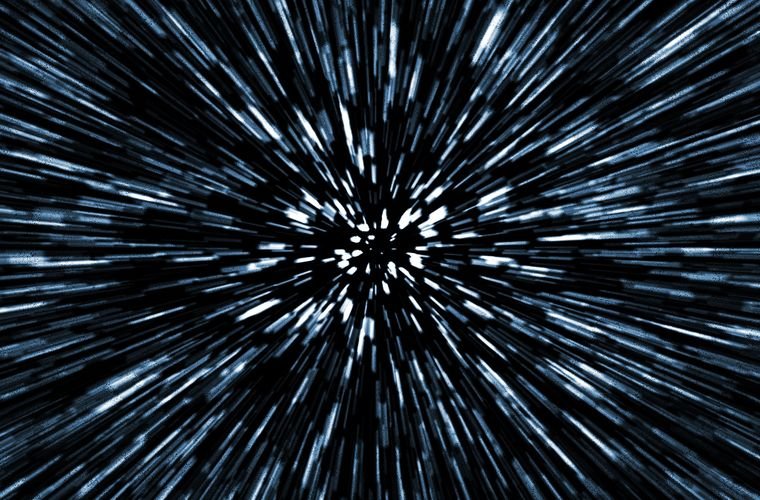When it comes to space travel, Hollywood can use special effects in ways that often give us a realistic perspective on what such spacefaring could really be like in the future. While some of these special effects (especially from decades past) might not have been quite so convincing, others at times have presented themes and imagery that are surprisingly accurate scientifically speaking.
One of these effects, known as the Unruh effect, has been difficult to test in a laboratory due to it only being experienced during spaceflight. Only recently have scientists discovered a way to test this effect, learning more about space travel and black holes.
Background: What is the Unruh Effect?
Simply put, the Unruh effect is a quantum physics theory where an individual moving through space will see more thermal radiation (like black body radiation) compared to an individual that isn’t moving. The Unruh is perhaps best known for its appearances in the Star Wars films, where stars stream past when the Millennium Falcon jumps to hyper speed, but are seen to glow even brighter towards the end of the space jump, as can be seen in the video below:
This effect was first discovered by Canadian physicist Bill Unruh and relates to Stephen Hawking’s research on the glow from black holes. According to a Ph.D. student in Physics at the University of Waterloo, Barbara Šoda: “Black holes are believed to be not entirely black. Instead, as Stephen Hawking discovered, black holes should emit radiation. This is because, while nothing can escape the black hole, quantum fluctuations of radiation can.” This means that the black hole can glow, which is similar to the Unruh effect where moving things also glow. However, because the Unruh effect needs a very fast acceleration to produce a glow, it’s been hard for researchers to test in a lab.
Analysis: Lasers for Space Travel
The researchers at the University of Waterloo believed that they had found a work-around for this issue by using high-powered lasers. In shining these lasers on a moving particle, the team of researchers found that the Unruh effect could actually be measured. This is an important find, as the theoretical physics can now be validated using an experimental setup.
Outlook: Unifying Theories
The researchers plan to do further experiments to continue testing this effect. They also hope to use this effect to help unify Einstein’s theory of general relativity with quantum mechanics. This unification has been a goal for many physicists over decades of research. “The theory of general relativity and the theory of quantum mechanics are currently still somewhat at odds, but there has to be a unifying theory that describes how things function in the universe,” explained Achim Kempf, a professor of applied mathematics at the University of Waterloo and co-author of the recent paper.
“We’ve been looking for a way to unite these two big theories, and this work is helping to move us closer by opening up opportunities for testing new theories against experiments,” Kempf says. While further research is ongoing, knowing that the Unruh effect can be tested not only gives scientists more insights into space travel but may also give Hollywood more accurate content for future space films.
Kenna Castleberry is a staff writer at the Debrief and the Science Communicator at JILA (a partnership between the University of Colorado Boulder and NIST). She focuses on deep tech, the metaverse, and quantum technology. You can find more of her work at her website: https://kennacastleberry.com/

